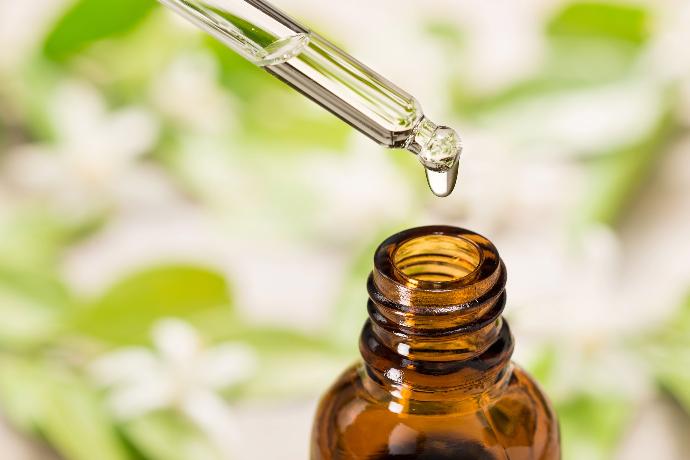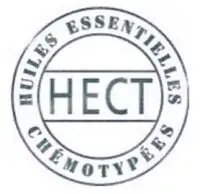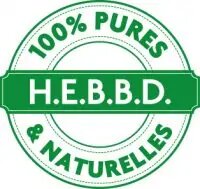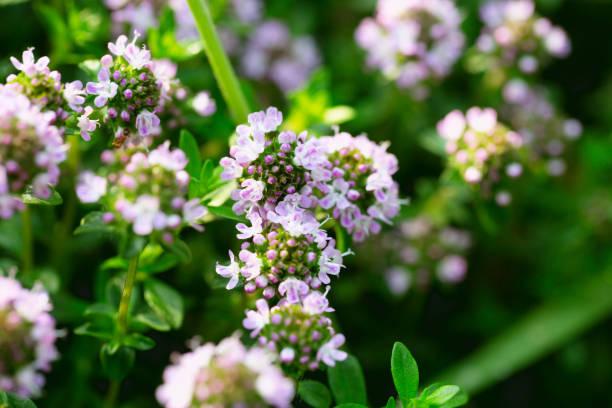Have you ever seen the HECT or HEBBD label on your essential oil bottles? This means that you have in your hands a chemotyped natural product. What is the chemotype of an essential oil and why is it so important in aromatherapy? We explain everything.
The chemotype: The essential oil's chemical identity card
Each plant variety has its own biochemical profile, giving it very specific qualities and properties. But there is also great variability within a single botanical variety.

Throughout its life cycle, a plant is influenced by the soil in which it grows, by the climate in which it is immersed, by the amount of sunlight it receives and by the other plants around it.
This environment has an impact on its chemical components, and therefore on its pharmacological properties.
This biochemical profile, resulting from the combination of the vast array of molecules present in the plant and giving it its main characteristics, is called chemotype.
The concept of the chemotype was developed by Pierre Franchomme, a researcher specializing in medicinal essential oils, back in 1975.
How do I use a chemotyped essential oil?
To use an essential oil correctly, you need to know more than just the botanical variety from which it comes and the part of the plant used to extract it. Knowing the chemotype is essential to choosing the right essential oil for your needs and determining the right dosage. Two essential oils from the same plant species, but differing in chemotype, will not only have the same benefits, but also differ in toxicity!
The meaning of the HECT and HEBD labels
Chemotyped essential oils can be recognized by the presence of the HECT or HEBBD label.
When choosing your essential oils, it's important to check that the packaging contains all the information required for precise identification of the product: international plant name in Latin (genus followed by species) and chemotype. You may also find the origin of the plants and the parts used (roots, leaves, flowers, etc.) to make the essential oil. The completeness of the information provided is your guarantee of a quality essential oil!

HECT
Chemotyped Essential Oil

HEBBD
Botanically and Biochemically Defined Essential Oil
How is the chemotype of an essential oil defined?
The chemotypical profile of an essential oil is established in the laboratory by gas chromatography or mass spectrometry. These two methods can be used to separate and quantify the various chemical substances present in the oil.
Manufacturers or importers of essential oils must also comply with European REACH regulations if they market more than one tonne per year in European countries.
In particular, they must draw up a dossier presenting the studies carried out to determine the physico-chemical properties and impact on health and the environment of each essential oil. Some essential oil brands also offer products bearing the organic farming label.
What are the various properties of essential oils that can benefit you?
Thyme EO chemotypes
Thyme vulgaris, or Thymus Vulgaris, is a common Mediterranean plant with no fewer than 7 main chemotypes!
Each of them gives rise to an essential oil with a distinct fragrance and aroma, as well as properties of its own.
Thyme essential oil (Thymus vulgaris CT thujanol), for example, is an excellent anti-infective and liver stimulant with little risk of overdose or misuse.

However, it should not be used by pregnant women under 3 months of age, by babies under 3 months of age, or ingested by children under 3 years of age. On the other hand, Thyme essential oil (Thymus vulgaris CT thymol), much appreciated for its antibacterial properties, is dermocaustic and can be toxic to the liver if consumed for too long. It is not recommended for pregnant or breast-feeding women or children. It is also not recommended for asthma sufferers.

Rosemary EO chemotypes
Rosemary Cineole essential oil (Rosmarinus officinalis CT cineole) has expectorant and fluidifying properties, ideal for respiratory infections.
Rosemary Verbenone essential oil (Rosmarinus officinalis CT verbenone or ABV) is effective for treating the liver and gallbladder.
These two essential oils can be used by children over 6 and by women outside pregnancy and breastfeeding. Asthmatics and epileptics should seek medical advice before use.
Finally, to treat cramps or relax muscles after intense effort, Rosemary Camphor essential oil (Rosmarinus officinalis CT camphor or borneone) is ideal!
This essential oil should not be used by pregnant or breast-feeding women, children under 7 or in cases of hormone-dependent cancer.
In conclusion, the chemotype of an essential oil is just as important as the variety of plant used. Pay close attention to the origin and quality of your essential oils, and you'll enjoy all the benefits of aromatherapy!



